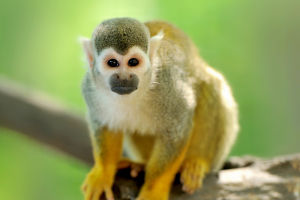Known as the "flying flower", butterflies are a very beautiful class of insects. The body is long and cylindrical, divided into three parts: head, thorax, and abdomen. The body and wing membranes are covered with scales and hairs, forming a variety of color patterns.
Butterflies have brilliantly colored wings and are often used as ornamental insects. The scales on the butterfly's wings not only make the butterfly beautiful but also act as a raincoat for the butterfly. The scales of the butterfly's wings are rich in fat, so the butterfly can fly even when it is raining lightly.
Butterflies are active during the day, and the larvae of most species feed on weeds or wild plants. The larvae of a small number of species become pests by feeding on crops. Very few species of larvae become beneficial insects by eating aphids.
Origin of butterfly name
The word butterfly is derived from the Old English word Butterfleye, which consists of butter (butter) plus fleoge (flying creature).
There is a long-standing saying that because the butterfly likes to steal cream and milk, people describe it as a genie with colorful wings that like to steal cream, so it is called a butterfly.
Another explanation is that butter refers to the color of butterflies; fly refers to insects that can fly, and the word butterfly probably refers to a kind of pink butterfly with a sulfur color (closer to the color of cream when the wings are closed) that appeared after the winter in southern Europe. The word "butterfly" has evolved into a butterfly and is used to refer to all species of butterflies.
Life Habits of Butterflies
After the larvae of butterflies break through the egg shells and hatch, some species feed directly on the host plants; some species (such as the red-eyed butterfly) feed first on the egg shells and then on the plants; some species also feed on the old epidermis shed during each molt, for example, the beetle butterfly and the bean butterfly.
Most of the larvae feed on leaves; pollen butterflies and orange-spotted lapwing butterflies feed on flower buds; some species eat young pods or young fruits, such as bean pod gray butterflies that eat young pods and gardenia gray butterflies that eat young fruits of gardenia.
In addition, there are a few species of larvae in the family of gray butterflies that are carnivorous, for example, the mealybug butterfly eats coffee mealybugs, and the bamboo aphid butterfly feeds on bamboo aphids, and such carnivorous species are not rare beneficial insects in butterflies.
The larvae that feed on plant leaves often gnaw the flesh on the back of the leaves, leaving the upper epidermis and forming a transparent spot like a glass window. As the insect grows larger, it feeds more and more. On a plant, if there are more larvae the whole position will be eaten clean.
Most of the butterflies suck nectar, as far as nectar-sucking butterflies are concerned, they not only suck nectar but also love to suck the nectar of certain specific plants, for example, blue phoenix butterflies suck the nectar of lily plants; vegetable pink butterflies suck the nectar of cruciferous plants, and leopard nymphs suck the nectar of chrysanthemum plants, etc.
Some butterflies that do not suck nectar are bamboo-eyed suck fig sap; light purple nymphs suck sick oak and poplar trees' Acid pulp; there are also some butterflies that suck the flesh of grapes, and it is common for butterflies to suck in grape fields.
Now, do you know more about butterflies?


